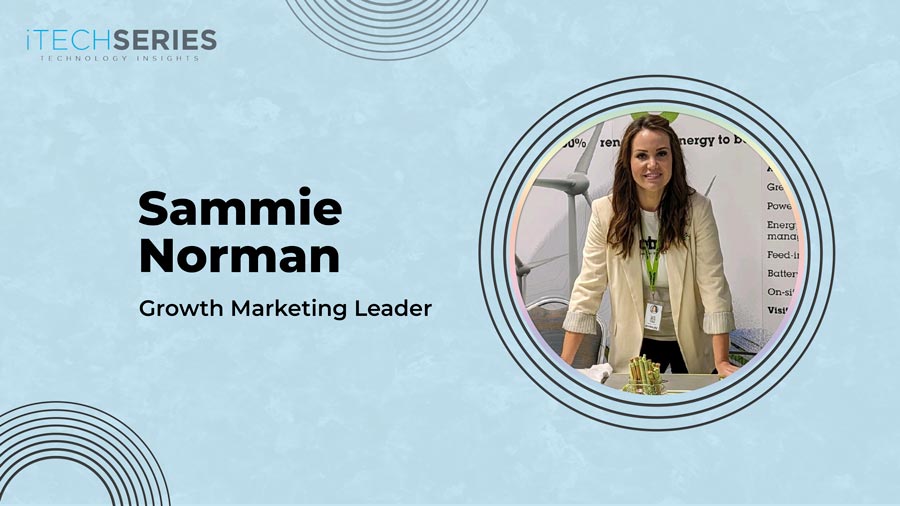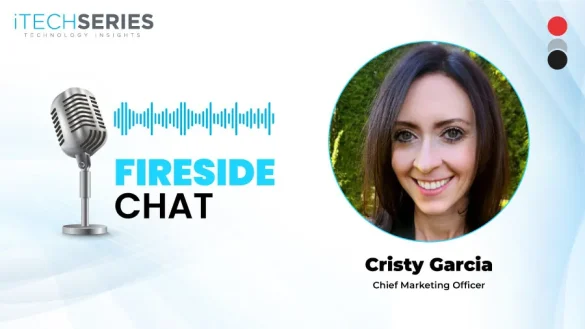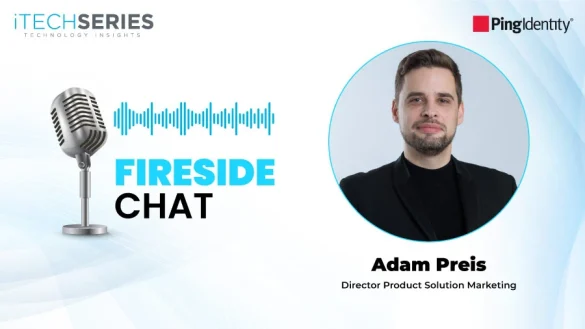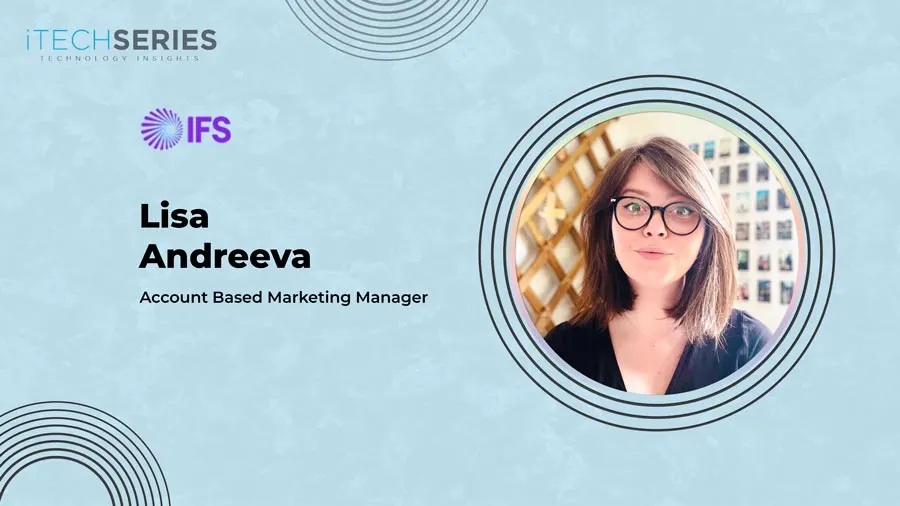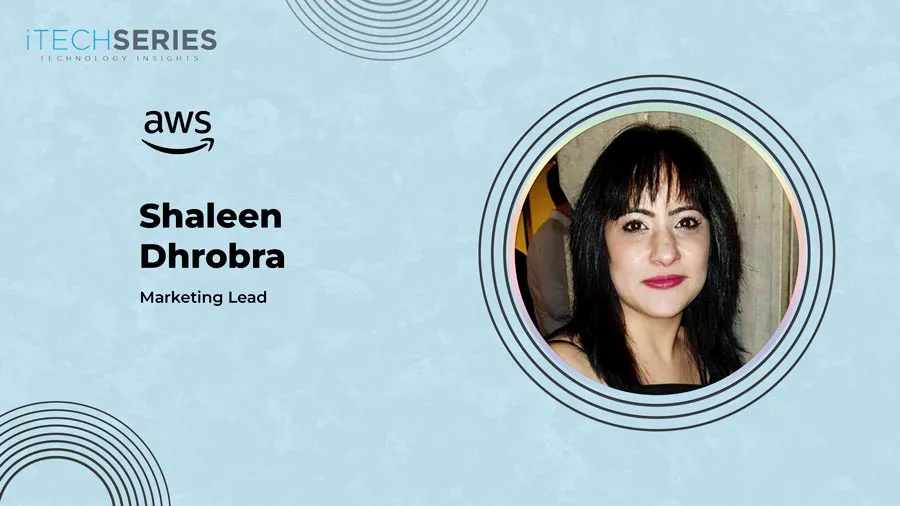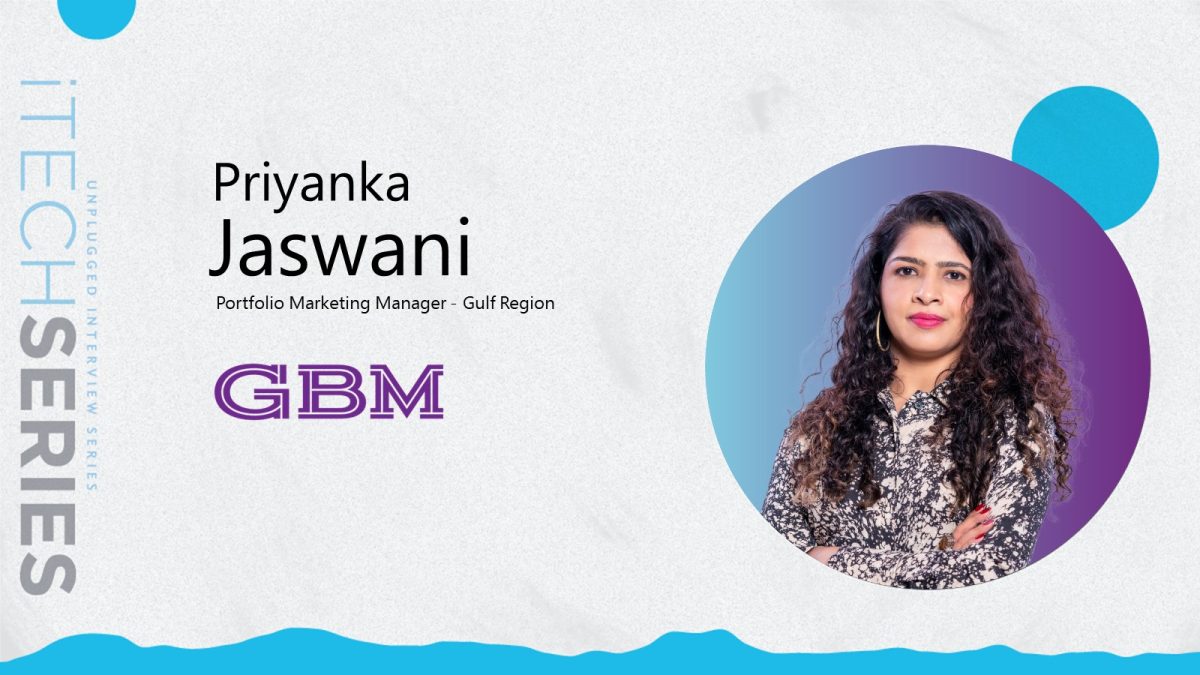Sammie Norman, a seasoned marketer with over 11 years of experience in B2B software marketing, discusses her journey from hands-on roles at tech start-ups to leading strategic field marketing initiatives. She highlights the evolving role of field marketing, integrating data-driven strategies, leading high-performing marketing teams, and offering insights into building cohesive brand strategies.
Welcome to the interview series, Sammie. Could you tell us a bit about yourself and your journey as a marketer?
I’ve been working in B2B software marketing for over 11 years now, and my journey has been an exciting one. I started in hands-on roles at tech start-ups, which allowed me to wear many different hats and really develop into a well-rounded marketer. I learnt everything from strategy to execution, and that hands-on experience shaped a lot of my approach today.
I’m a naturally ambitious person, so I progressed quickly in my career, and I’ve always strived to push myself to take on new challenges. Initially, my creativity was what drew me to marketing—finding new ways to communicate value, engage with customers, and create compelling campaigns really sparked my interest. But as I’ve grown in my career, I’ve also discovered a real love for the more analytical side of marketing, too. I love diving into the data—understanding where leads are coming from, why certain campaigns work better than others, and how we can optimise our efforts based on that insight. It’s a great mix of creative thinking and data-driven decision-making that keeps me excited about what I do!
How have you seen the role of field marketing as having evolved within an integrated revenue org structure?
Over the years, I’ve seen field marketing evolve significantly, especially within the context of an integrated revenue organisation. Traditionally, field marketing was more siloed, focusing primarily on events and local outreach. However, as the need for alignment across departments has grown, field marketing has shifted to play a much more strategic role in driving the overall revenue pipeline.
Today, field marketing is much more closely integrated with sales, demand generation, and customer success teams. It’s no longer just about planning and executing events or campaigns in isolation—it’s about ensuring that every interaction with prospects and customers contributes to the larger revenue strategy. Field marketers are now more involved in the planning stages, working alongside sales to ensure the messaging is aligned and that the right leads are being nurtured. Additionally, there’s much more emphasis on data-driven decisions and measuring the impact of field marketing efforts on the broader revenue goals.
I’ve seen firsthand how this integration helps streamline processes and create a more cohesive approach to lead generation, conversion, and retention. Field marketing isn’t just about local tactics anymore; it’s about driving results that impact the entire revenue funnel.
“Field marketing isn’t just about local tactics anymore; it’s about driving results that impact the entire revenue funnel.”
How do you prioritise which channels or events to focus on for your field marketing initiatives?
When it comes to prioritising channels and events for field marketing, I always start by taking a step back to align with the broader business and revenue goals. It’s important to ensure that every initiative we choose directly supports those objectives.
First, I look at the target audience: What are their behaviours, preferences, and pain points? This helps me determine where they’re most active—whether it’s certain social media platforms, industry events, webinars, or in-person conferences. Once I have that insight, I focus on the channels that not only provide the best engagement potential but also the highest likelihood of driving qualified leads.
Data plays a huge role in my decision-making process as well. I constantly analyse past performance—what’s worked in the past, what hasn’t, and how different channels or events impact lead generation and conversions. For example, if I see a particular event type or virtual platform yielding strong results, I’ll prioritise it in future planning. Similarly, I’m mindful of cost efficiency and ROI, so if something isn’t delivering the right results, I pivot quickly and reallocate resources where they’ll have the most impact.
Ultimately, it’s about ensuring we’re focusing on high-value opportunities while also staying flexible and agile enough to adapt when new opportunities or insights emerge.
You recently participated in the Microsoft 365 Copilot in Public Sector event. Could you share some key insights and takeaways from that event?
Participating in the Microsoft 365 Copilot in Public Sector event was a fantastic experience, as I had the opportunity to engage with a diverse group of attendees. Some were already running Copilot pilots, while others hadn’t yet started the implementation process, which created a great dynamic for conversation.
One of the key insights that stood out was the underlying fear that many attendees had around implementing Copilot. A lot of people expressed concerns about their data being mishandled—whether that was Copilot extracting inaccurate insights or, even more critically, generating insights that could breach confidentiality. There was a lot of emphasis on the need for strict data governance, as organisations were understandably cautious about the risks of sensitive information being exposed or misinterpreted by AI.
Another key takeaway was that while most attendees were eager to implement Copilot, many were facing significant challenges with their data readiness. The majority of organisations I spoke with were struggling with issues like data sprawl, legacy data, and inconsistent data quality, which made it difficult to fully leverage Copilot’s capabilities. Without clean, structured, and properly governed data, they were hesitant to take the next steps.
It was clear that, for organisations to successfully implement Copilot, they would need to address these data issues first—ensuring their data is well-organised and secure enough to support AI-driven insights. That’s going to be a key hurdle for many, but once that foundational work is done, the potential for transformation is huge.
How do you approach creating a cohesive brand strategy that resonates with both internal teams and the target audience?
Creating a cohesive brand strategy starts with ensuring alignment at all levels—both within the organisation and with the target audience. Internally, it’s crucial to bring key stakeholders together early on, whether it’s leadership, sales, product teams, or customer success. By getting everyone aligned on the brand’s mission, vision, and values, we can ensure that the messaging and tone are consistent across all touchpoints. It’s about creating a unified front and making sure that every team understands not only what the brand stands for but how their role contributes to that larger narrative.
Externally, I focus on truly understanding the target audience—their pain points, needs, and aspirations. This involves a lot of research and listening, whether through customer interviews, surveys, or data analytics. Once we have that deep understanding, we can craft a brand story that resonates with them on an emotional level and speaks directly to their challenges and desires. This helps ensure that our messaging is not only relevant but compelling.
One key aspect of creating a cohesive brand strategy is making sure that both internal teams and the target audience feel a genuine connection to the brand. Internally, that means fostering a strong sense of ownership and pride in the brand. Externally, it’s about ensuring that the brand is relatable, trustworthy, and memorable.
Lastly, consistency is key. Whether it’s through digital marketing campaigns, events, or product messaging, I make sure the brand identity is applied consistently across all channels so that both employees and customers have a clear, unified experience with the brand.
Can you tell us about your most memorable marketing campaign experience?
One of the most memorable marketing campaigns I worked on was during my time as Head of Marketing at a start-up tech company. We were tasked with penetrating an emerging market, which is always a challenge—especially when the audience doesn’t yet fully understand the value of the product. Our goal was to introduce software that would significantly improve efficiency and ROI and help bring businesses in that market up to speed with current technology-based ways of working. The tricky part was that the audience didn’t yet realise they needed these solutions, so part of our job was educating them on the benefits.
To tackle this, I worked closely with localised marketing teams to deeply research and understand the target audience. By letting the local teams adapt our go-to-market strategies, we were able to ensure our messaging resonated culturally and contextually with each region. Globally, I took the initiative to align messaging so that it was adaptable across all regions, ensuring consistency while allowing for localisation. This approach helped maintain a unified brand presence while still allowing for the nuances of different markets.
We used a holistic marketing approach to create consistency across both outbound and inbound efforts. Everything from our advertising to our content and social media strategy was aligned to ensure we were consistently delivering the same core message. A key element in this was making sure our sales teams were fully aligned with the messaging, as they were the ones on the front lines interacting with prospects and customers.
Additionally, we partnered with reputable local 3rd parties—industry bodies, partners, and influencers—to help maximise our reach and boost credibility. These partnerships were invaluable in establishing trust and expanding our presence in the market. It was a challenging but incredibly rewarding campaign, as we not only educated an audience on a new way of working but also helped the company establish a strong foothold in a new market.
What metrics do you use to evaluate the success of your field marketing strategies, and how do you adjust your approach based on the analytics?
When evaluating the success of field marketing strategies, I look at a combination of both quantitative and qualitative metrics, always aligning them with broader business and revenue goals. From a more senior, strategic level, it’s important to measure not just immediate outcomes but also how field marketing contributes to the overall pipeline and long-term growth.
Key metrics I focus on include:
1. Lead Generation and Quality: We track the number of leads generated through field marketing efforts, but just as importantly, we assess lead quality. Are these leads converting? Are they moving through the pipeline effectively? We use tools like lead scoring to ensure we’re not just driving volume but generating qualified opportunities.
2. Engagement and Interaction Rates: Whether it’s event participation, content downloads, or direct engagement at trade shows or webinars, we look at how deeply the target audience is engaging with our campaigns. Strong engagement often indicates that the messaging is resonating and that we’re capturing the right attention.
3. Conversion Rates and ROI: Ultimately, the success of field marketing is tied to revenue. I focus on measuring how many leads convert into sales and how field marketing initiatives impact the sales cycle. I also keep a close eye on ROI to ensure that resources are being allocated effectively. This involves not just direct costs but the broader impact on the customer journey.
4. Sales Alignment and Feedback: Another critical metric is how aligned field marketing is with the sales team. We track feedback from sales about the quality of the leads and any adjustments we might need to make. This can give us important insights into refining the strategy or shifting focus.
5. Brand Awareness and Market Penetration: Especially in new or emerging markets, field marketing efforts help build brand awareness. We measure increases in brand recognition, social mentions, and overall presence within key regions or sectors.
Based on these analytics, I continuously refine the strategy. If I notice that certain channels or events aren’t delivering the expected results, I adjust by reallocating resources to the most effective tactics. I’m always testing, learning, and optimising to ensure our field marketing is not just executing on tactics but contributing meaningfully to the company’s long-term success.
As a marketing leader, how do you navigate challenges and seize opportunities related to region-specific marketing?
As a marketing leader, I believe one of the most important aspects of navigating region-specific challenges is empowering localised marketing teams to take the lead while still providing overall strategic direction from the core or corporate marketing team. Local teams have a much better understanding of the nuances of their market—their audience’s behaviours, cultural preferences, and local trends—so it’s crucial to trust their expertise and give them the flexibility to tailor campaigns and tactics that will resonate best in their region.
That said, it’s equally important to ensure there’s alignment across the organisation. I make sure that the localised teams are clear on the broader goals, messaging framework, and key performance indicators, but then give them the autonomy to adapt these to fit their region’s unique needs. This allows for both consistency and relevance in our approach.
When navigating challenges, such as regional regulatory constraints or cultural differences, I work closely with the local teams to ensure we’re respecting those nuances while staying aligned with the overall brand vision. This might mean adjusting creative assets, revising messaging, or even selecting different channels or tactics that are more effective in specific markets.
As for seizing opportunities, it’s about staying agile and responsive to the market. Local teams are often the first to identify emerging trends or shifts in consumer behaviour. I encourage them to bring those insights back to the larger team so we can take advantage of new opportunities quickly. This could be an upsurge in interest around a particular product feature or a new partnership with a local influencer or industry body. By fostering strong communication and collaboration, we ensure that regional opportunities are not just identified but acted upon swiftly and strategically.
What advice would you give aspiring marketing leaders on leading high-performing marketing teams?
My advice to aspiring marketing leaders is to trust your team and give them the autonomy they need to thrive. As leaders, it’s important not to micromanage. Your team is made up of experts, and they’re there because they bring valuable skills and ideas to the table. Treat them as such, and empower them to take ownership of their work. When people feel trusted and have the freedom to experiment, they’re more motivated and innovative, which ultimately drives better results.
My management style is democratic—I believe in collaboration and creating an environment where everyone’s voice is heard. As a team, we all have different strengths, perspectives, and experiences, and when we bring those together, we can come up with more creative solutions and better strategies. I make it a point to involve my team in decision-making, foster open communication, and create opportunities for them to contribute ideas.
We all work better together than in silos. When you have a diverse team, it’s important to encourage cross-functional collaboration and ensure everyone feels like they’re part of a shared mission. In my experience, when everyone’s aligned and contributing to the bigger picture, that’s when the magic happens. It’s about creating a culture of trust, respect, and shared accountability where the team can come together, support one another, and really deliver exceptional work.
About Sammie Norman
Sammie Norman is a seasoned senior marketer with over 11 years of experience in B2B software marketing. Starting in hands-on roles at tech startups, she developed a well-rounded skill set in marketing strategy, execution, and team leadership. Sammie is known for her creativity and analytical mindset, driving marketing campaigns that deliver measurable ROI. As a confident and personable leader, she excels at building rapport with stakeholders at all levels, from C-suite executives to team members.

